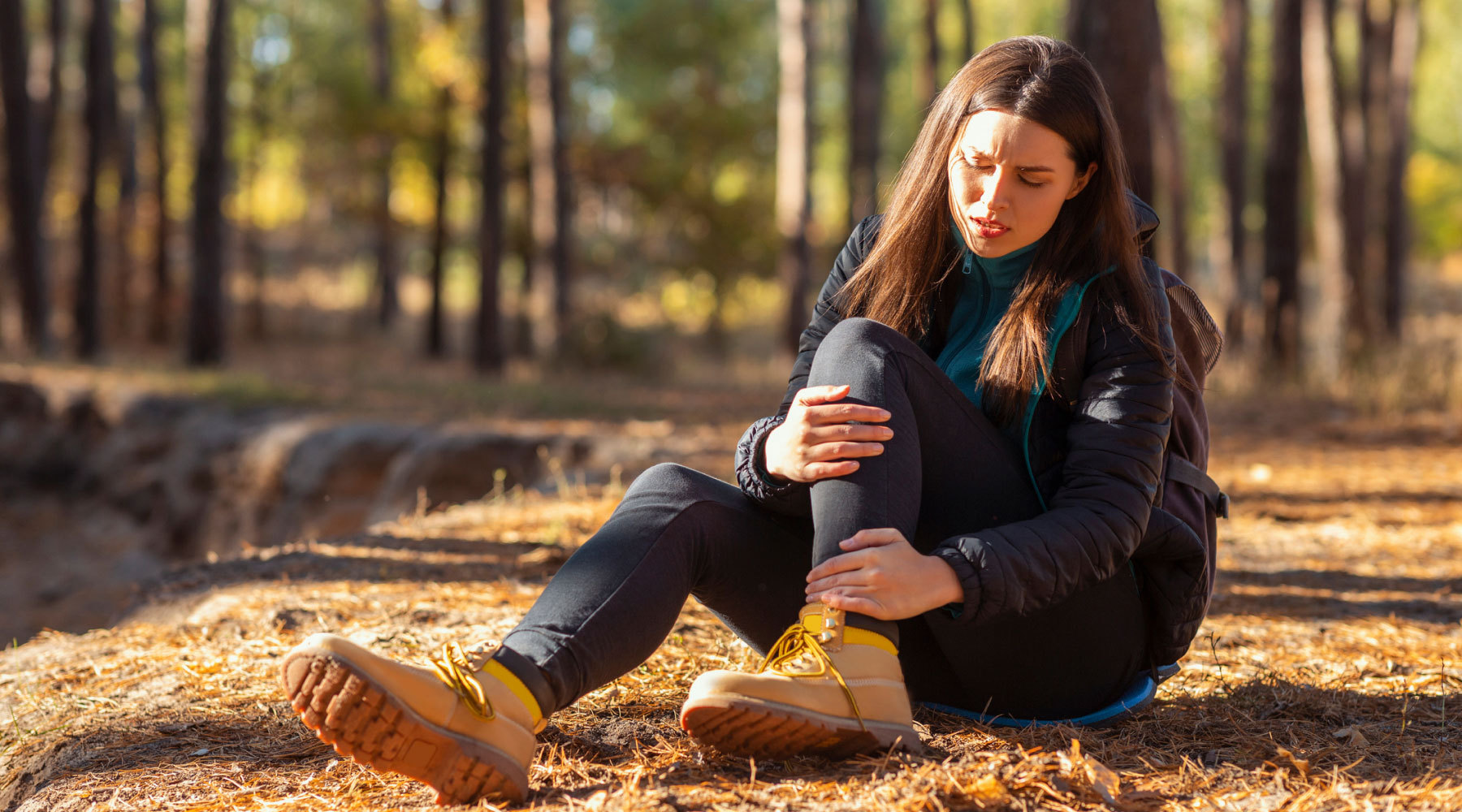
As leaf-peeping mania takes over New England, most people are heading north to the mountains to catch a glimpse of the changing colors. For some, this is as simple as a relaxing car ride, but for a lot of people, this is ideal hiking time. Before you hit the trails, it’s important to be aware of the common hiking injuries. With our trail safety guide, you’ll be prepared should you encounter an injury.
Safety tips
In order to stay safe on the trails, it’s important to know what you’re about to encounter in the great outdoors. Research where you’ll be trekking to ensure that it is the right place for your skill set, and don’t opt for intense climbs if you’re just starting out. Check the weather and dress in layers in order to avoid risks of hypothermia and hyperthermia. Carry a trail map or guidebook in order to stay on the right path. Bring plenty of water.
Heed the advice of TLC and don’t go chasing waterfalls. By staying on the marked trail, you should encounter fewer obstacles and stay visible to other hikers. Always try to have a hiking buddy; aside from great company, should you encounter an issue or become hurt, someone is aware and can assist or get help.
Ankle sprains
Ankle sprains are very common among hikers due to the unpredictable terrain and inclines. Pay attention to the ground below and up ahead as you’re hiking to avoid slippery rocks, branches, and wet leaves. When planning your hike, ensure that you have proper footwear, ideally supportive hiking boots, but athletic shoes can also be used on easier trails. In an unpredictable environment, falls and slips are common occurrences. Keep your eyes on the path to avoid tripping hazards and uneven surfaces. If you’re prone to shakey ankles, consider wearing a brace to help keep your ankle supported in the event of a potential jarring unexpected pivot or tweak.
Knee pain
Like any other strenuous activity, knee pain is always a risk. While long-distance walking and climbing can cause some aches, descending an incline takes the greatest toll on your knee. As you make your way down, your knees are forced to endure your full body and pack weight on one knee at a time while being met with the force of the decline. To take the stress off of your knees, consider using hiking poles that can not only help you stabilize your stance but your weight can be distributed on those as well. Like the tip we left in the ankle section, if your knees are subject to weakness, sport a supportive brace to help burden the load.
Shoulder pain
When thinking about hiking, shoulder pain is not one of the immediate risk factors that come to mind. Aside from falling, shoulder pain can come from something far more simple. As most hikers carry a backpack on their treks, an ill-fitting and heavy pack can cause muscle tension and strain. As you prepare for your hike, find a backpack that fits you well, has ample padding, and make sure it is not too loose. If you are unsure, check with experts at your local outdoor recreation store, who will be able to find your perfect fit. Ensure that you pack the essentials without going overboard to make it heavier than it should be. Strengthening your muscles can also prepare you for any shoulder pain when carrying a pack.
If you find yourself facing an uphill battle with a hiking injury, we’re here for you.



